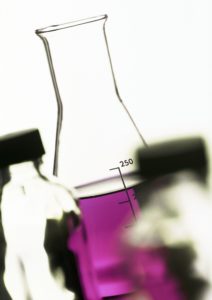 The six core values referred to in the title are a selection, a small number of concepts isolated from a large number of ideas the cosmetic chemists and researchers can apply to, when it’s up to them to create a new formulation.
The six core values referred to in the title are a selection, a small number of concepts isolated from a large number of ideas the cosmetic chemists and researchers can apply to, when it’s up to them to create a new formulation.
However, these values were originally intended to be investigated in a completely different realm, that is literature. Italo Calvino, one of the most important Italian authors of the twentieth century, collected six lectures named after these values, to be read at Harvard (Norton Lectures, “Six Memos for the Next Millennium”). They were yo show the importance of Lightness, Quickness, Exactitude, Visibility, Multiplicity and Consistency in the art of writing. The same six concepts are here reviewed by a cosmetic chemist, who utilizes them into the formulation process. Examples of ingredients or techniques representing the core values featured in the title are found.
Lightness
This is one of the most sought-after sensorial benefits in a cosmetic formulation. It is a built-in value, strictly connected to the intended product form (fluid, emulsion, gel and cream) and to the ingredients choice. In most emulsions, lighter textures are obtained through the replacement of traditional ingredients (fatty alcohols, oils, waxes and other fluid lipids) with esters, emollients, volatile compounds. For emulsions (like most of skin-care products), the use of oils showing a high content of poly-unsaturated fatty acids, or with a branched structure (e.g. grapeseed oil) results in a lighter , non-occlusive film on skin.
Non-oily, non-tacky feel, easy and quick application (see) are obtained with “light” ingredients.
Among light ingredients are some hydrocarbons like Isododecane (IDD). It is volatile, improves wear properties and leaves no residues after application. A lot of make-up products (foundations, lip products) contain IDD because of its light emollient feeling, non-greasy feature, excellent spreadability.
Esters also play an important role in building lighter textures. Isodecyl Neopentanoate, Heptyl Undecylenate are examples of these light-feel esters. These low viscosity ingredients can also show excellent dispersing properties. In pigments-containing products, the lower the viscosity, the better the dispersion properties of the vehicle. Their afterfeel is very similar to that of volatile silicones, so such esters can be helpful in case the replacement of silicones is needed.
 Quickness
Quickness
Calvino defines quickness as “the speed with which events follow one another” (in a novel). One could wonder how this can apply to formulating cosmetics. Different performances fall under this definition: a shorter time of application, a better spreadability, a quick absorption/drying. When grouped together, these features may well be defined quickness.
Once again, some ingredients are better fit for purpose, inside a formulation.
To deliver easy and fast absorption, texture is of the utmost importance (the thinner the best, and -in this case- the quickest). Low molecular weight ingredients (small molecules) reach the skin inner layer, quicker than larger polymers. A typical example is Hyaluronic Acid, with a few Kda molecular weight, is absorbed in a few seconds after the application. But it’s in the domain of visible (or measurable) cosmetic results that quickness can be seen at work, especially when evaluation is done through scientific testing. A real evolution can be observed, in that effects are displayed in minutes (or hours) instead of days/months. During a recent in vivo test, an application on skin of a special aqueous extract from cherry blossoms delivered a result against skin discoloration in just three hours.
During a different test, a complex based on powerful anti-oxidants like Olive fruit extract and Buddleja Officinalis Extract showed its activity in less than 20 minutes after the application inside an anti-pollution fluid formulation (DPPH test). Alpha Glucosyl Hesperidine, a water-soluble bio-flavonoid obtained by condensing Hesperidine with a Glucose unit, used inside a hand cream, shows a quick recovery of hand temperature from a cold stress (10-20 minutes). As anything in modern life, cosmetics are expected to work, and work fast.
Exactitude
All formulators think their recipes must be as accurate as possible, therefore «exact», as they imagined them all through the R&D process. Accuracy extends to all different aspects of formulation: compatibility between different ingredients, solubility limits, right dosage of some actives, manufacturing tips. But there is more than calculation. Exactitude has to do with delivering the expected results. Vitamin E, a anti-oxidant, is among the ingredients of thousands of cosmetics products, but far less are so exactly formulated to preserve and enhance its activity, delivering the promised result.
It is used in skin-care products, thanks to its neutralizing action on free radicals, and to the many benefits obtained when skin is exposed to pollution and ultraviolet radiation.Here, exactitude is achieved not by just adding the desired amount of Vitamin E to the bulk, but also by evaluating the presence of γ-Tocopherol, (= the most powerful anti-oxidant among the eight constituents – tocopherols and tocotrienols -inside the ingredient used).
A more subtle, more precise determination of what is inside a cosmetic ingredient, this is exactitude.
Visibility
The challenge of transforming a formulation into an actual, finished product, has much to do with visibility.
Like a film director, that visualizes a written text (a script, or a screenplay) in his mind, then reconstruct it on the set, and finally fix the result in his film’s frames, so does the formulator.
Not only is he committed with his text – the product and its intended scope – but also with an attractive look, able to create a visual impact for consumers.
The first impression a product creates in opening a jar (or tube, bottle) or during application, is the formulator equivalent of the director’s film.
Color, texture, uniform appearance, brilliance, even distribution under rubbing , are like film’s frames. The emphasis is on what consumers / movie viewers can understand of a product, visually.
“Cameleon” products, are striking examples of visual impact : they maintain their normal mass tone (or transparency) until application, then they release a fast and
intense colour (red, yellow, green, black, brown, white…) upon rubbing on skin. The secret is: microcapsules, usually made of cellulose or cellulose-like materials, filled
with actives -with a dyestuff inside to identify the product’s functionality -(moisturization, UV screen, antiaging) that break under a light pressure. Another excellent example of visibility in formulating cosmetics is encountered in Oil-to-Milk products. Here, a product is poured on skin in the oil form, then it is transformed
under friction/rubbing; the appearing of the milky texture is a clue for consumers, that the product is ready to use (many cleansers are based on this feature). Visibility is creating the eye-catching effect, or transforming the script into a movie.
Multiplicity
Formulation starts with a vast number of possibilities. Researchers use to combine different experiences, information, books and magazines they have read, things they have imagined (their own Encyclopedia, in Calvino’s words).
Many different sources contribute to create the final formulation. As in the example taken from literature, all of the formulators’ knowledge can be reassembled and re-ordered in many different ways. Also, Multiplicity is found inside finished products. This happens when different (compatible)ingredients are used in a single formulation to target different cosmetic problems in the same area (= prevent signs of aging, reduce or eliminate fine lines, treat puffiness and dark circles in the eye area).
Consistency
One could really be spoilt for choice, when it comes to define consistency in the realm of cosmetics. During formulation, to be consistent means to adopt an orderly, reliable approach in the research and development job. Consistency is, therefore, about the formulator(s) behaviour, it’s a personal (or group) feature. But it can easily transform into a product’s attribute. Here, consistency is achieving a level of performance which does not vary greatly in quality over time. Evenness, stability, constancy, uniformity, are all synonyms for Consistency.
by Silvio Valle, cosmetologist

